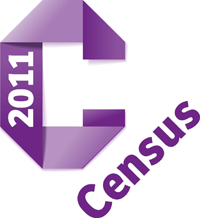The Real World

May 2011 The Psychologist, 24 (5).
The day of the UK Census was the day after the massive Anti-Cuts March in London.
The newspapers that day were full of anarchists and mayhem. Indeed, only one paper led on the main March itself. All the others had pictures of conflict and destruction.
At one level, this a graphic example of an old story: crowds are only reported in the media when they are violent, so gradually an equation is made between crowds and violence. The lowest estimate of numbers on the march was 250,000. The highest estimate of ‘troublemakers’ was ‘several hundred’ (lets say 500 to be generous). So 0.02% of those protesting received the lion’s share of the coverage. It would be hard to be much more biased.
But there is more.
Of the ‘several hundred’ defined as troublemakers, the great majority were non-violent protestors from UK UnCut. This group mounts peaceful occupations of shops and companies (in this instance Fortnum & Mason’s) which they accuse of avoiding tax. Only a few were the notorious ‘Black Block’ who attacked Police and property. Moreover, of around 200 arrests, all but 13 were of UK UnCut activists.
So, as Ben Goldacre noted the following Saturday in The Guardian, by lumping these very different groups together in a single rather threatening category, two things were achieved. First, the level of danger was greatly increased (‘several hundred’ people rampaging through London sounds rather frightening). Second, the success of the police in dealing with the danger was likewise increased. So, on a day of anti-Cuts activism, perhaps it was the police were most effective in making a case for retaining their public funding.
So much for the coverage of the march. After the excitement of our Sunday papers, we turned to our census forms and to something entirely different. Or was it? To start with everything was rather dull and straightforward: we answered questions about who we live with, our date of birth, our country of birth. But then things got trickier: how would you describe your national identity; what is your ethnic group (our emphases) — as if the former were a judgement and the latter a fact. And then, of course, came complexities of how to fit oneself within the categories provided.
This year, the most complex and controversial issue concerned the religion question. What is the criterion for saying one is religious — that one believes, or that one is part of a congregation, or that one was brought up in a particular way, or even that one comes from a family with a certain tradition?
There is no simple answer to these questions. Even more complex is the question of how the information be used. If more people say they are religious will it lead to greater state support for religion through changes in educational and social policy? That was certainly the fear of the Secular Society in calling for people to put down that they were of no religion. It was certainly in our minds when we filled in the forms.
And at this point, the lessons from the Census and the March begin to merge. Numbers might be neutral. But the categories which form the basis for our counting most certainly are not. And if those who collect and report statistics are using categories to shape the world to their own ends, then it is a fair assumption that when people respond to these categories in the process of completing questionnaires they are attempting to do the same.
Numbers never speak for themselves.
The Real World
A Migrant is not a migrant by any other name
October 2015
It's a man's (virtual) world
June 2014
Putin: The Naked Truth
April 2014
Genius and creativity (re)explained
October 2013
In praise of asylums
September 2013